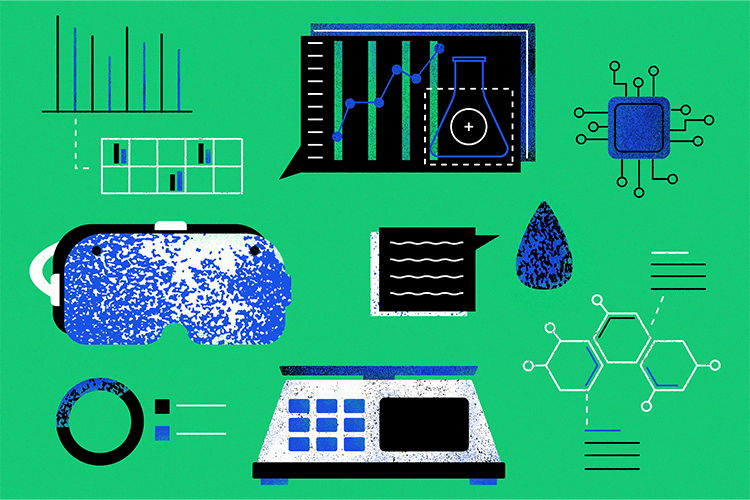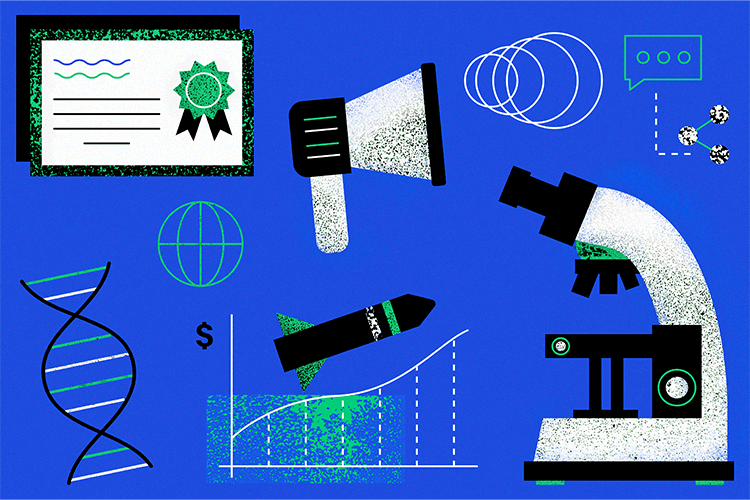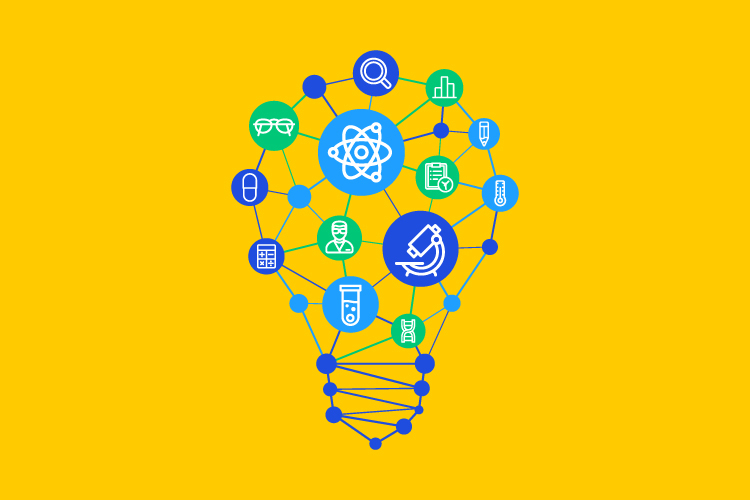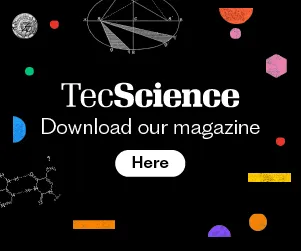Many knowledge and research centers face a common problem: ideas that are proposed remain on paper.
Engineer Manuel Macías had imagined and started working on laboratories “to go” (ones that come to your house or work) three years before the start of the Covid-19 pandemic.
Although he and his colleagues had participated at conferences and published in scientific journals regarding their technology, they wanted to make their laboratories for real, so they started looking for options to build them.
That was when Macías began to work with Tec de Monterrey’s Technology Transfer Office (TTO).
The TTO not only helped Macías with setting up his company, which he called Laiboyan, it also gave him advice on taking his project to an innovation hub in China.
“One of the huge advantages was that they helped get me in the room with the people who make decisions, which enabled us to speed up the process,” recalls Macías.
By 2020, when the pandemic struck, Laiboyan was already supplying technology and services to institutions such as the Tec itself, who wanted students to have remote access to real laboratories located on a campus, in another state within Mexico, or even on the other side of the world.
What is technology transfer?
Mexico dedicates a mere 0.4% of Gross Domestic Product (GDP) to research, according to the 2021 Science Report from the United Nations Educational, Scientific and Cultural Organization (UNESCO). Even so, it stood out as one of the leaders for scientific publications in Latin America, with 23,508 publications from 2011 to 2019.
Although this research strengthens academia, how many of these ideas become something tangible and make a positive impact on society?
According to the World Intellectual Property Organization (WIPO), the goal of technology transfer is to transform inventions and scientific outcomes into new products and services that benefit society.
Tec de Monterrey’s TTO helps researchers turn their work into technology-based companies, prototypes and products that can prove themselves in the marketplace or be licensed to companies who need these solutions.
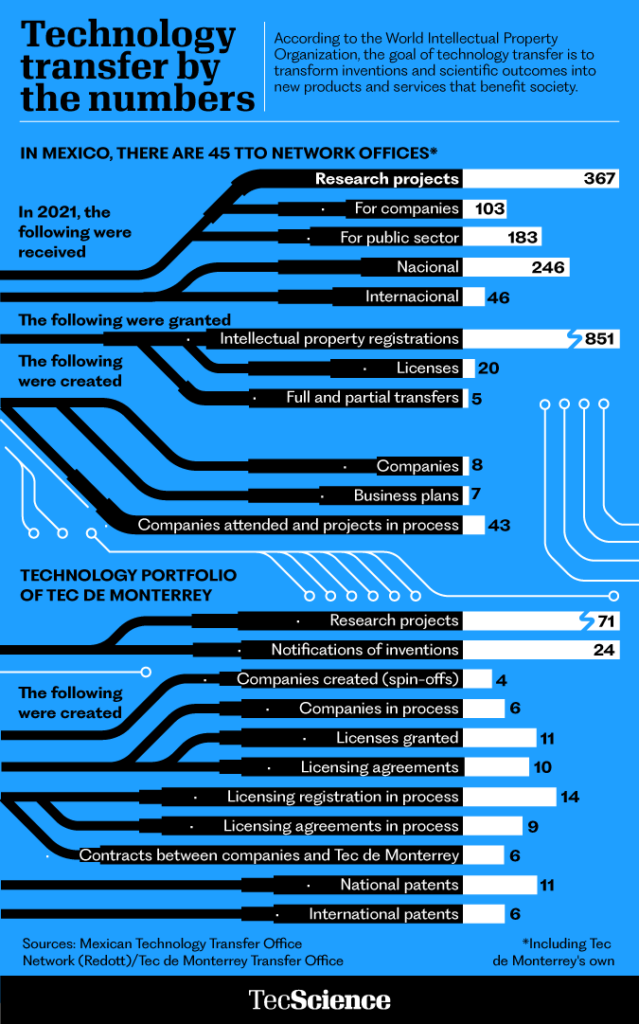
Tec de Monterrey’s Technology Transfer Office (TTO)
Ensuring that research conducted at the Tec is useful for society is the TTO’s main objective.
The problems or needs that the TTO focuses on are strategic: the future of education, research on obesity, and sustainable manufacturing.
“We’ve designed a process based on society’s needs, to attempt to solve them through technology,” says Arturo Santos, Technology Transfer Director.
He explains that they are attempting to shift from the traditional model, in which research is aimed at publication, to a model that first investigates a problem and then works on a technological solution.
“From the moment they design their project, we want to ensure that staff and researchers are thinking about what business they want to start and not have it occur by chance,” he explains.
In this process, the TTO seeks to accompany researchers to help them patent their research, develop a prototype, secure funding, define a sales strategy, set up a business, and grant licensing for the company.
Tec de Monterrey has now launched a platform called Science Connexion to help researchers get their foot in the door, where they can access calls for proposals, courses, and services from the Office itself.
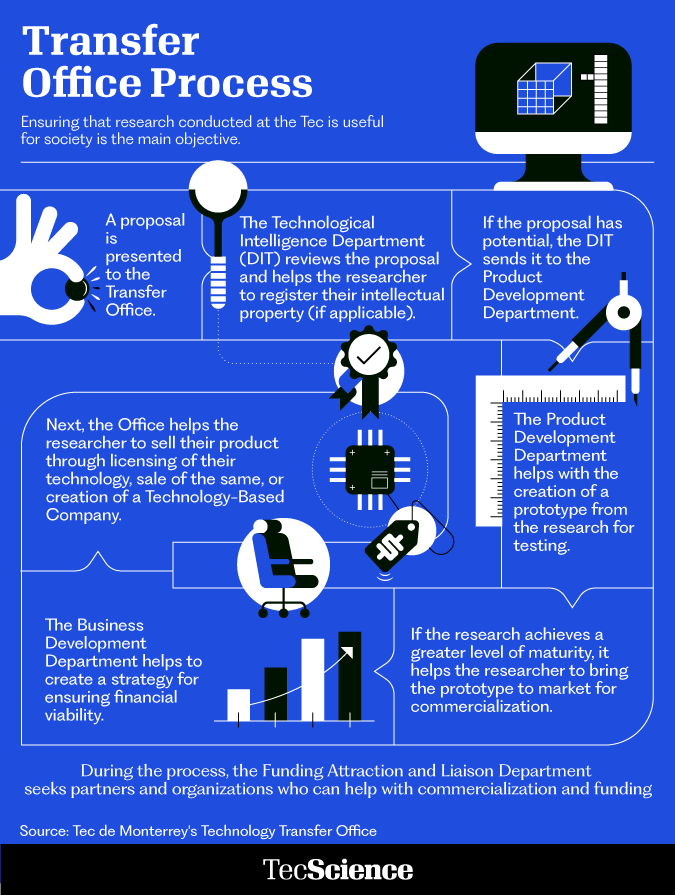
TTO success stories
Manuel Macías worked for years on research into virtual instrumentation, which includes remote laboratories and Artificial Intelligence.
However, the researcher has now taken his company Laiboyan to China, where they will be looking to provide the Asian market with an option for virtual laboratories, while they continue to provide service to the Mexican market.
A similar case is that of Edgar Raygoza, a doctoral student of Engineering Sciences with a specialization in nanofluids, who was conducting research into the use of nanotechnology in additives such as industrial lubricants.
“I come from a technical background and my career is in engineering, so I’m not connected to the business side. When I started studying for a Ph.D., my plan was to go out and work for a company as a technologist in that area,” recalls Raygoza.
However, during his studies, he decided that his research project should be more than just a publication. Although he didn’t feel capable of setting up a business, he found an answer in the TTO.
Despite having no business experience, they trusted his technology and provided support to patent it.
His company, Global Nano Additives, has now been part of entrepreneurship programs such as one at Tel Aviv University in Israel and even received an award from the Technological Innovation Fund set up by the Ministry of Trade and the National Council of Science and Technology (CONACyT).
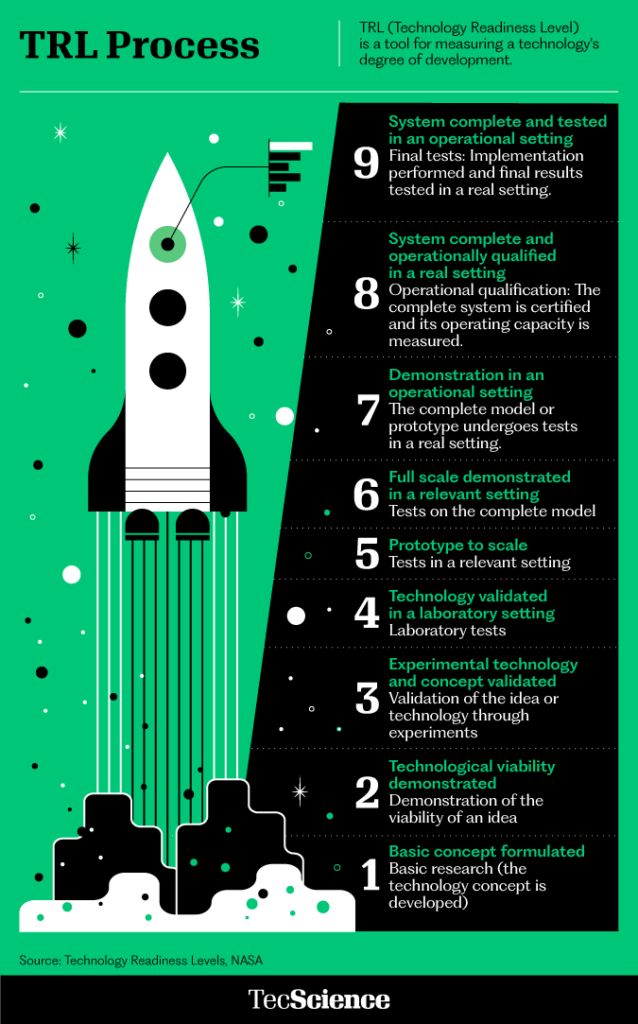
Pull and push approaches
There are two approaches for going from research to technology transfer.
The push approach is one in which researchers do their jobs and answer questions posed by themselves or based on other scientific research, while the outcome may or may not answer a current need of society.
In contrast, the pull approach seeks to provide a solution to a social question or one from a company or organization and then conducts research, occasionally funded by that quarter. Silicon Valley is precisely one of the places where this approach is popular.
There, institutions such as the University of California have founded more than 1,125 companies based on research and patents, generating more than 18,400 jobs and an investment return of 14 billion dollars in 2014 alone.
Through the TTO, Tec de Monterrey is now seeking to promote greater participation of its researchers in the latter approach.
Between 2016 and 2020, Tec de Monterrey achieved more than 6,500 scientific publications and 38,000 citations, as well as 49 patents transferred between 2005 and 2020, together with 370 submitted and 150 granted by the Mexican Institute of Intellectual Property (IMPI).
Edgar Raygoza and Manuel Macías exemplify the effectiveness of technology transfer at the Tec, which in 2021 reported the creation of four companies, with another six on the way and 11 licenses. But they’re not the only ones.
Tec researchers Grissel Trujillo and Mario Álvarez created the technology-based company Forma Foods, which prints meat for human consumption, without the environmental impact the meat industry causes to the world.
For Álvarez, “applying knowledge feels good, not just on a scientific level but also on a personal one. Feeling that you can go beyond what happens in the laboratory is something really special.”
